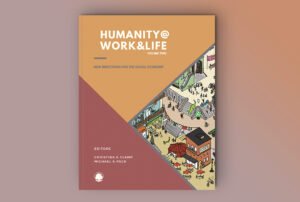?According to Pew Research Center estimates, in 2008, young voters between the ages of 18 and 29 made up 18 percent of the electorate. Young leaders were key foot soldiers for partisan and nonpartisan civic engagement campaigns across the country. In several 2008 elections, Latino and immigrant voters were viewed as having made the decisive difference and thus have been taken more seriously than previously. So how should we understand the intersection of these two much-discussed groups? What role did immigrant youth play in civic engagement efforts in 2008 and what lessons do their efforts provide for how nonprofits can successfully engage immigrant youth during and between elections?
In 2008, one theme shared by immigrant organizations across the country was the pivotal role of immigrant youth in linking their communities to the mainstream U.S. political process. This article explores the role of immigrant youth in civic engagement from the point of view of four nationally recognized nonprofit organizations.
Youth As a Crucial Bridge for Immigrant Civic Engagement
According to the Center for Immigration Studies, immigrants account for one in eight U.S. residents; and according to U.S. Citizenship and Immigration Services, in 2008 more than 1 million immigrants became new citizens. But the country’s newest citizens face many barriers to full participation in voting and broader civic engagement activities, including a lack of understanding of the U.S. political process, language barriers, discrimination, workplace exploitation, and poverty.
In 2008 immigrant youth emerged as the engine for many immigrant civic engagement initiatives across the country. As one looks closely at those who made phone calls, walked through precincts, and participated actively in immigrant communities with multiple ethnicities, the hard work of immigrant youth abounds. Their bilingual/multilingual and multicultural capacities allowed immigrant youth to reach out to young and older immigrant voters and eligible U.S.-born children of immigrants. The following stories of four organizations share best practices in how nonprofit organizations can effectively engage immigrant youth in voting and the political process.
Deep Education: NAKASEC Best Practices
In 1994 the National Korean American Services and Education Consortium (NAKASEC) was founded to empower and improve the lives of Korean Americans in the goal of building a national movement for social change. Two of its key programs include the Immigrant Rights Project and Civic Engagement and Voter Empowerment Project. In February 2009, NAKASEC—along with nonprofit organizations and allies across the country—played an instrumental role in winning the renewal of the State Children’s Health Insurance Program (or SCHIP), including for immigrant children.
For more than a decade, NAKASEC affiliate organizations in Los Angeles and Chicago have led multifaceted nonpartisan voter engagement initiatives. One distinguishing feature of the organization’s model is the holistic empowerment approach; it works with Korean Americans at every level to learn about the political process, become citizens, register to vote, learn about ballot measures, vote, assist in exit polling, engage their elected officials, and become year-round civic leaders. “One of NAKASEC’s top priorities for 2008,” notes HyunJoo Lee, NAKASEC’s national organizing coordinator,
was that our members and youth leaders understood the political process and the mechanics of the system, always from the perspective of immigrant communities. A significant achievement was producing a bilingual guide to civic engagement for our communities. It included sections on how government works, the federal budget, voting rights in the United States, the mechanics of voting, the specific steps in the U.S. presidential election, and campaign finance laws.
In NAKASEC’s view, “deep education” is key, particularly with immigrant youth whose parents may be unfamiliar with the U.S. political process. “Beyond tools and educational sessions, we also did things such as pairing youth volunteers with veteran older leaders who could share their experiences precinct walking, phone banking, and fielding tough questions from our constituency,” Lee says. “Our youth volunteers were our most passionate. Given the education we did on the political process and the connections we made with our issue campaigns, our 2008 youth civic leaders are continuing as critical public-policy advocates.” Whether nonprofit organizations want to lead voter engagement programs or increase their constituencies’ civic awareness, NAKASEC offers lessons for educating immigrant youth leaders.
Putting an Immigrant Community on the Map: VAYLA-NO’s Best Practices
The Vietnamese American Young Leaders Association of New Orleans (VAYLA-NO) is a youth-led, youth organizing and development, and community-based organization in New Orleans. It is dedicated to the empowerment of Vietnamese American and underrepresented youth through services, cultural enrichment, and social change. In 2006, on the heels of Hurricane Katrina, young community leaders founded VAYLA-NO to create a voice and address the needs of the local community. Committed to youth development, community empowerment, higher education, and cultural awareness, VAYLA-NO is composed of young leaders and high-school and college students who want to empower others educationally, mentally, physically, and spiritually.
“Vietnamese Americans were one of the first communities to move back to New Orleans following Hurricane Katrina,” says Minh Nguyen, the executive director of VAYLA-NO.
There were plans to build a landfill in our community, and we knew we had to get engaged to stop that. Young leaders play a critical role in our community because they are bilingual. Since 2006, our young leaders have registered voters, become poll monitors and poll commissioners, and ensured that New Orleans Vietnamese American voters took to the polls. Young leaders succeeded in translating the voter registration form into Vietnamese, which is now being used in several counties in Louisiana. We faced some challenges when some established older leadership did not want to recognize the young leaders, but through intentional relationship building and dialogue, we’ve been able to build more understanding. One successful message is that “we are the future.” Our elders will not be able to lead forever, and we need to ensure that the next generation is trained and effective.
Sign up for our free newsletters
Subscribe to NPQ's newsletters to have our top stories delivered directly to your inbox.
By signing up, you agree to our privacy policy and terms of use, and to receive messages from NPQ and our partners.
The Vietnamese community is being heard more than ever before in New Orleans. Congressional and city council members now listen to us and attend our meetings. The civic engagement leadership of young Vietnamese-American leaders was critical to this change in recognition.
A member of the Vietnamese American community in southern Louisiana, Anh Joseph Cao even ran and successfully won a seat in the U.S. House of Representatives, becoming the first Vietnamese American congressperson in the United States.
Connecting Indigenous Leaders with Nonprofit Organizations: ICIRR Best Practices
The Illinois Coalition for Immigrant and Refugee Rights (ICIRR) is dedicated to promoting the rights of immigrants and refugees to full and equal participation in the cultural, social, and political life of society. In partnership with its member organizations, ICIRR educates and organizes immigrant and refugee communities to assert their rights; promotes citizenship and civic participation; monitors, analyzes, and advocates for immigrant-related issues; and informs the general public about immigrant and refugee contributions. As part of the New Americans Democracy Project (NADP), ICIRR ran the New Americans Vote 2008 campaign to register and turn out the vote of immigrants. The organization’s efforts represent an integrated campaign to increase civic participation through voting, citizenship, and volunteerism to build power within the immigrant community.
“Youth were the most important component of our electoral program in 2008,” says Juan Jose Gonzalez of ICIRR’s NADP. Homegrown talent was the theme.
In the past, we had brought in youth from outside our community, but we quickly realized that they were not effective. We had 20 NADP fellows in 2008. They were placed in both social-service as well as community-organizing nonprofit organizations. Since these fellows came from immigrant communities, were personally affected by the issues ICIRR works, and had a deep commitment to social justice, they were highly effective.
We trained these 20 fellows and allies across the country in our 2008 boot camp. The Democracy Project Fellows model increased the capacity of nonprofits in Illinois in a way that would never have been possible otherwise. Even more rewarding is that many of these fellows were hired as permanent staff by their 2008 host nonprofit organizations. Youth Leaders Turned Electoral Leaders: CHIRLA Best Practices
Formed in 1986, the Coalition for Humane Immigrant Rights of Los Angeles (CHIRLA) advances the human and civil rights of immigrants and refugees in Los Angeles; promotes harmonious multiethnic and multiracial human relations; and, through coalition-building advocacy and other efforts, empowers immigrants and their allies to build a more just society. In 2008, CHIRLA contacted a total of 8,611 through phone banking and door knocking and tens of thousands more through its media campaign. “Our youth leaders were the driving force of our civic engagement programs,” says Horacio Arroyo, CHIRLA’s regional organizer and civic engagement coordinator. In 2008, CHIRLA worked with the Wise Up program that consists of youth clubs at eight local high-school campuses and coordinated with the California Dream Network college and university campuses.
“Our immigrant youth were fueled twice as much to get out the vote in 2008,” Arroyo says.
They were not only passionate about such issues as access to college for undocumented immigrants, but they were also motivated to change the conditions they saw their parents facing. We were proud that our civic engagement volunteers and leaders came from our base. We didn’t organize high-school youth for 10 years to let them miss out on the historic 2008 elections. One of our best practices is that we developed our current grassroots youth leaders to be civic engagement leaders; they recruited volunteers, ran phone banks, and turned out voters by precinct walking. This movement-building approach paid off. These youth leaders are now developing plans to engage local voters in our public-policy campaign and continue to recognize the importance of electoral-movement building as a key strategy to advance ongoing issues that affect youth. During and after Election Day, the students continue to get calls from other high schools who want to start Wise Up clubs on their campuses and have now added two additional high-school clubs for a total of 10.
Conclusion
In the 2008 elections, immigrant youth played a critical role in voter engagement efforts, and they continue to play a leadership role in their organizations. It is worth noting that the majority of the nonprofit staff members quoted in this article are themselves under 30 years old. Understanding the critical role of young immigrant leaders and gleaning lessons from organizations such as NAKASEC, VAYLA-NO, ICIRR, and CHIRLA offer insight for all nonprofit organizations on engaging immigrants and youth in the civic process.
To comment on this article, write to us at feedback@?npqmag.org. Order reprints from https://store.dev-npq-site.pantheonsite.io, using code 160208.










